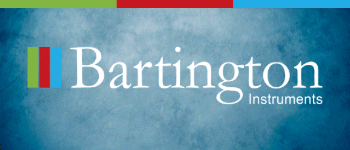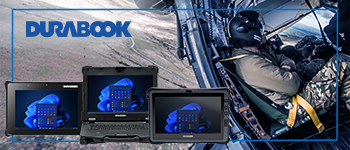Unlocking tomorrow
Jeff Ross reveals how cloud-based systems are revolutionising access control
As businesses evolve, so does the technology that protects them. The latest shift in access control is significant: it marks a move away from traditional, static systems towards more dynamic, cloud-based solutions. This new delivery model provides flexibility and complete control in real time, strengthening security and making it a seamless component of business operations.
Many organisations across a variety of industries are finding value in cloud-based access control systems for their ability to bolster security, streamline operations and empower adaptability as their operational and security needs evolve. This growth is fuelled by a need for heightened security, scalable solutions conducive to business expansion and platforms that enable remote access and seamless integration. Cloud-based access control systems present a versatile, economically sound and forward-looking substitute to traditional physical security setups, making them a favoured option by organisations across a wide variety of end users.
In the past, hardware and physical infrastructure have played a major role in access control systems. Businesses needed to invest in extensive on-site equipment, from servers to dedicated security rooms, and manage everything locally. While this offered direct control over security components, it came with high costs and limited flexibility.
The advent of cloud technology has transformed this landscape. Cloud-based access control systems eliminate much of the physical infrastructure, instead hosting data and controls on secure, remote servers managed by specialised providers. This shift is not merely technological, but strategic – enabling businesses to scale security measures more fluidly and align them with overall business growth and geographic expansion.
The emphasis on user experience in modern access control systems reflects another shift, this one toward more user-friendly and intuitive systems. No matter the user’s location or device, these systems are made to be available through a variety of connected sensors, platforms and devices. This offers a consistent and enjoyable user experience, similar to what you experience each day on your mobile phone.
The flexibility of these systems to personalise dashboards to match the specific needs of many users is one of their primary advantages. Having the option to customise their view and controls can help managers and security officers who are in charge of several buildings or entry points to respond more quickly and efficiently.
Also, the transition to cloud-based access control systems has revolutionised how a user interacts with security infrastructure. These systems are accessible from any device and feature user-friendly interfaces requiring minimal training. For instance, operators can now manage access permissions or review security logs from their smartphones, enhancing convenience and responsiveness. This digital transformation extends to custom notifications and alerts, which can be configured to inform stakeholders of security events in real time, enabling swift action and enhancing overall safety.
Since cloud-based systems are inherently flexible, companies can upgrade their capabilities without making large hardware investments. This inherent scalability helps businesses financially and technically because it allows them to move from costly models to ones with more predictable operating costs.
The cloud service provider manages system upgrades and maintenance, which relieves internal IT personnel of some of the workload and eliminates downtime usually associated with upgrades or repairs in traditional systems. Scalability and flexibility are essential for businesses of varying sizes. These solutions allow organisations to expand their systems quickly as they grow and expand to new locations, offering unparalleled flexibility and adaptability for users looking to add new doors, sites, and personnel to existing systems.
An in-depth financial study demonstrates that cloud-based access control solutions provide a strong long-term return on investment. According to research published in the International Journal of Science, Engineering and Management, cloud systems, with subscription-based models, improve cash flow management while reducing the financial risks associated with significant capital expenditures. Unlike traditional systems that require substantial upfront hardware investments and continuous maintenance costs, cloud solutions allow businesses to save money in the long run by minimising the need to purchase, maintain, and upgrade technology. This conversion from large fixed expenses to smaller variable costs can significantly impact financial planning and business operations.
Systems for cloud access control provide improved security measures that are updated often to fend off new threats. Providers invest significantly in cyber security measures, such as sophisticated encryption and recurring security audits, to guarantee that data is secure.
Cloud providers use strong multi-factor authentication and role-based access controls to secure system access further. Multi-factor authentication requires users to give various forms of identification, considerably lowering the chance of unauthorised access due to compromised credentials. Role-based access control ensures that individuals only have access to the information required for their roles, which reduces the possibility of internal threats. These systems often come with built-in compliance controls, making it easier for businesses to adhere to industry standards and international regulations, which is particularly valuable for global enterprises that must navigate a complex network of compliance requirements across different regions.
Cloud access providers also regularly perform security audits and vulnerability assessments to ensure continued reliability and security. Third-party specialists conduct these evaluations, which are essential for identifying and addressing system flaws. The results of these audits are crucial in defining system updates and security enhancements, ensuring cloud-based access control systems fulfil current security standards while being prepared for future threats and compliance requirements.
Cloud platforms can also make life easier compared with on-premises solutions by enabling seamless integration with virtually any third-party software application. This versatility ensures optimal utilisation of your access control system, maximising its value. By tapping into an open platform architecture with robust APIs and mobile SDKs, businesses can effortlessly integrate these systems into their existing systems and workflows.
This support for what seems like endless integration options facilitates task delegation and automation, streamlining operations and enhancing security measures across your infrastructure. The potential for bolstering efficiency and security is limitless, providing a dynamic edge only achievable through the open architecture of cloud-based access control systems.
Imagine integrating your access control with various third-party applications you hadn’t thought possible before due to the complexity involved. Integrating access control with video surveillance improves security by synchronising entrance logs with video footage, allowing for visual verification of all access activities. Similarly, combining access control with building management systems can improve energy usage by connecting access patterns to heating and lighting systems, thereby increasing energy efficiency and lowering operating costs.
Cloud-based access control solutions offer unparalleled convenience by centralising data management and streamlining operations onto a single, accessible platform. With secure storage in the cloud, users can effortlessly access information from anywhere in the world with an internet connection. This accessibility facilitates swift and secure data sharing across departments, fostering engagement and ensuring seamless information flow throughout the organisation.
The nature of these cloud-based systems enhances user-friendliness, enabling easy management from any internet-enabled location. From adding and deleting users to updating access credentials and generating reports, the intuitive interface empowers users with efficient control over their access control operations, promoting agility and productivity.
Cloud-based access control solutions are particularly beneficial for organisations managing multiple branches or facilities as they can monitor access control activity across various locations, ensuring consistent security protocols throughout the organisation. Organisations can streamline operations, reduce administrative burdens, and maintain consistent security standards across the enterprise by administering security protocols through a single, cloud-based dashboard.
Cloud-based technologies provide a strengthened platform that makes management smoother across numerous locations. For international businesses, this implies the ability to monitor and regulate access from a central centre, ensuring that uniform security measures are followed globally. This centralised approach minimises operational complexity and improves security supervision by enabling fast access authorization adjustments in response to emerging risks or operational changes. Centralising data also allows for more thorough data analysis, resulting in insights that can further improve security and operational initiatives.
We’re all interested in saving some money. Cloud-based access control solutions offer a significant advantage in cost over traditional systems burdened with upfront investments in hardware and infrastructure. With traditional systems, maintenance and upgrades can further escalate the overall investment and consume valuable time. In addition, the improved support for integrations with operating via the cloud allows end users to integrate systems into their existing access control infrastructure without expensive installation fees.
With subscription-based pricing models, businesses pay only for their services, avoiding underutilised resources. This strategy allows organisations to maximise return on investment and allocate resources more effectively. Your security program may also benefit from enhanced access control capabilities without having to bear the financial burden of traditional infrastructure expenditures and ongoing maintenance costs, ultimately improving your bottom line. The future is bright. The development of cloud-based access control systems is an ongoing process that is significantly influenced by digital transformation and developing security threats. Providers are always updating their systems to provide more robust solutions that match today’s security demands and are adaptable to the changes that may be ahead.
Cloud access control is designed to be future-proof. These platforms readily adapt to advancements such as quantum computing and the expanding Internet of Things network. Future developments might also include more sophisticated authentication methods and deeper integration with urban infrastructure, and maybe AI – potentially creating smarter digital ecosystems where access control is seamlessly integrated with transportation, residential, and commercial systems. Such integrations promise heightened security and a more intuitive and automated user experience.
As the world becomes increasingly digital, organisations must adapt and evolve to maintain a secure environment for their people and assets. Ultimately, cloud-based access control technologies significantly shift how businesses manage security and operations. These systems leverage cloud services to provide a scalable, flexible, cost-effective solution that improves user experience, operational management and compliance adherence. They offer a solid platform that meets the immediate security requirements of varied businesses and adapts to changing operational requirements and security concerns. It’s a reality: the cloud sets a new standard by integrating easily with existing systems and allowing for significant customisation, guaranteeing that organisations can protect their assets while driving efficiency and growth. As we progress through this technological evolution, adopting cloud services are set to be a standard for the future.
Jeff Ross is the Director of Marketing for acre security, with over 25 years of experience in physical security and cloud-hosted solutions.









